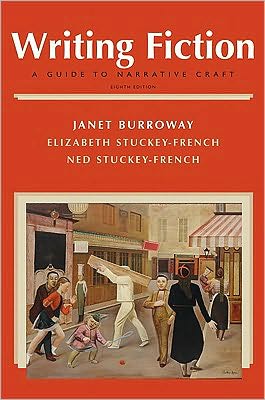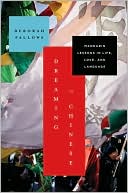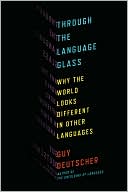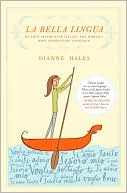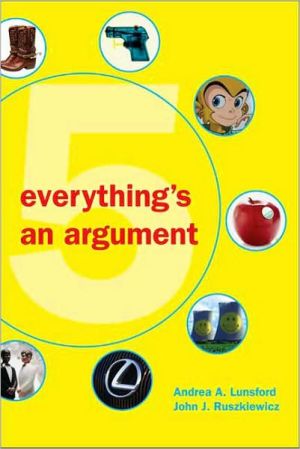Writing Fiction: A Guide to Narrative Craft
The most widely used and respected text in its field, Writing Fiction, 7e by novelists Janet Burroway and Elizabeth Stuckey-French guides the novice story writer from first inspiration to final revision by providing practical writing techniques and concrete examples. Written in a tone that is personal and non-prescriptive, the text encourages students to develop proficiency through each step of the writing process, offering an abundance of exercises designed to spur writing and creativity....
Search in google:
The most widely used and respected text in its field, Writing Fiction, 7e by novelists Janet Burroway and Elizabeth Stuckey-French guides the novice story writer from first inspiration to final revision by providing practical writing techniques and concrete examples. Written in a tone that is personal and non-prescriptive, the text encourages students to develop proficiency through each step of the writing process, offering an abundance of exercises designed to spur writing and creativity. The text also integrates diverse contemporary short stories in every chapter in the belief that the reading of inspiring fiction goes hand-in-hand with the writing of fresh and exciting stories.
*** indicate sections new to this edition.Preface1. Whatever Works: The Writing ProcessGet StartedJournal KeepingFreewritingExercisesThe ComputerThe Critic: A CautionChoosing a SubjectKeep GoingA Word about ThemeReading as Writers***About the Writing Workshop***How Workshops Work***The Writer’s Role***Writing Exercises2. Seeing is Believing: Showing and TellingSignificant DetailWriting about EmotionFilteringComparisonTypes of Metaphor and Simile***Metaphoric Faults to Avoid***The Active VoiceProse RhythmMechanics“We Didn’t,” Stuart Dybeck***“Big Me,” Dan Chaon“The Red Fox Fur Coat,” Teolinda Gersao (Translated by Margaret Jull Costa)***FreewritingExercisesThe ComputerThe Critic: A CautionChoosing a SubjectKeep GoingA Word about ThemeReading as Writers***About the Writing Workshop***How Workshops Work***The Writer’s Role***Writing Exercises2. Seeing is Believing: Showing and TellingSignificant DetailWriting about EmotionFilteringComparisonTypes of Metaphor and Simile***Metaphoric Faults to Avoid***The Active VoiceProse RhythmMechanics“We Didn’t,” Stuart Dybeck***“Big Me,” Dan Chaon“The Red Fox Fur Coat,” Teolinda Gersao (Translated by Margaret Jull Costa)***Writing Exercises3. Building Character: DialogueThe Direct Methods of Character PresentationDialogueSummary, Indirect, and Direct DialogueEconomy in DialogueCharacterizing DialogueOther Uses of DialogueDialogue as ActionText and Subtext“No” DialogueSpecificityFormat and StyleVernacular“Fiesta, 1980,” Junot Diaz***“Every Tongue Shall Confess,” Z.Z. Packer***“His Hand on my Restless Leg,” Pia Z. Ehrhardt***Writing Exercises4. The Flesh Made Word: Characterization, Part IIThe Direct Methods of Character PresentationAppearanceActionThoughtThe Indirect Methods of Character PresentationAuthorial InterpretationInterpretation by Another CharacterConflict between Methods of PresentationThe Universal ParadoxCredibilityPurposeComplexityChange Reinventing Character Creating a Group or CrowdThe Character Journal Character: A Summary“Mule Killers,” Lydia Peelle***“Bullet in the Brain,” Tobias Wolff“Tandolfo the Great,” Richard BauschWriting Exercises5. Far, Far Away: Fictional PlacePlace and AtmosphereHarmony and Conflict Between Character and PlacePlace and Character Place and EmotionSymbolic and Suggestive Place Alien and Familiar PlaceAn Exercise in Place“The Sea Fairies,” Maura Stanton***“Love and Hydrogen,” Jim Shepard“A Visit of Charity,” Eudora WeltyWriting Exercises6. Long Ago: Fictional TimeSummary and SceneRevising Summary and SceneFlashbackSlow Motion“Homonoids,” Jill McCorkle***“Mrs. Dutta Writes a Letter,” Chitra Banerjee Divakaruni“Feelers,” John Gould***Writing Exercises7. The Tower and the Net: Story Form, Plot, and StructureConflict, Crisis, and ResolutionThe Arc of the StoryPatterns of PowerConnection and DisconnectionStory Form as a Check MarkStory and PlotThe Short Story and the Novel“What You Pawn, I Will Redeem,” Sherman Alexie***“My Kid’s Dog,” Ron Hansen***“Everything That Rises Must Converge,” Flannery O’ConnorWriting Exercises8. Call Me Ishmael: Point of ViewWho Speaks?Third PersonSecond PersonFirst PersonTo Whom?The ReaderAnother CharacterThe SelfInterior MonologueStream of ConsciousnessIn What Form?At What Distance?Consistency: A Final Caution“Missing Women,” June Spence***“Who’s Irish?,” Gish Jen“Reply All,” Robin Hemley***Writing Exercises9. Play It Again, Sam: RevisionRe-VisionWorry It and Walk AwayCriticism and the Story WorkshopAsking the Big Question: “What Have I Written”How Fictional Elements Contribute to ThemeRevision QuestionsFurther Suggestions for RevisionExamples of the Revision Process“Notes on Keith” and early draft of “Keith,” Ron Carlson***Final Draft of “Keith,” Ron CarlsonWriting ExercisesAppendix: Kinds of FictionCreditsIndex
